Brace yourself for another industrial wonder from down under! Cockatoo Island was the pick of a friend in Australia who clearly understands me well. When he said “Go to Cockatoo Island” and I asked “What’s that?” He came back with, “Don’t ask, just go.” And he could not have been more spot on. I mean, who wouldn’t want to spend a whole Saturday wandering around an abandoned convict prison and shipyard?
Largest of the islands in Sydney Harbour, Cockatoo is a UNESCO World Heritage Site for its association with Australia’s convict history, which began in 1839 when the island was designated a penal establishment. It remained so for 30 years, with convicts first being employed in the construction of their own prisons and guardhouses (#twisttheknife). The island itself, like, it seems, much of Sydney, is basically a big chunk of sandstone, so once they’d adequately imprisoned themselves they went on to quarry stone for other building projects in the area, including the seawall at Circular Quay.
Getting to Cockatoo was easy, and as I mentioned, the weather was gorgeous. There’s also a nice information centre right near the ferry dock where they offer reasonably priced audioguides. Astute Go Stay Work Play Live Readers will recall I love a good audioguide, so I pounced on that and headed to the convict precinct of the island, which is sort of high up in the middle. Happily, the Cockatoo audioguide was quite good (unlike others in my experience - Roman Forum, I'm looking at you) and I liked that I could move at my own pace around the island, following the directions past the island's campsite.
Along with quarrying limestone, the convicts of Cockatoo were set to the construction of Australia’s first dry dock - the Fitzroy Dock - which was built to service the Royal Navy. Not long after the dock was finished, the convicts were moved to the mainland Darlinghurst Jail (or Gaol, if you insist) and the convict cells and related buildings were turned into a reformatory for wayward girls. Around the same time, just offshore, a large, wooden, three-masted sailing ship was anchored and became a home and school for neglected boys. The girls were split between two institutions - one a reform school for those who had broken the law, and one an industrial school intended to operate more like an orphanage. In practise, the two halves intermingled as the girls were all housed in the same dire cells the convicts had recently vacated, drinking from troughs, eating without utensils and sometimes forced to sleep on the flagstone floor as a punishment. The boys, on the other hand, were led by relatively benevolent masters who, while strict, taught them nautical skills, gardening (in a plot on the island), shoe-making and other useful skills. The intent was to reform the boys into useful citizens. The girls, on the other hand, were treated as a lost cause, trained for life as servants, locked in gloomy cells twelve hours each night, and left with little to occupy them. Charming.
There are quite a few of the old stone convict-built building left, including homes for the island governors and other staff. And while the main buildings have been tidied up you can still get a sense of how miserable they must have been, especially in the intense heat of an Australian summer. But convict prisons were not really what I went to Cockatoo Island for, so I was very pleased to head to the industrial side of the island.
Even while the reforms schools were still in operation, ship repair and ship building activities occupied the Fitzroy dock and surrounding area on the lower level of the island while the hapless girls were housed on the higher level of the island and the boys came and went from their ship, The Vernon, moored just offshore. The mix of shipyard workers with neglected boys and downtrodden girls led, inevitably, to some fraternisation, with the mistreated girls often seen as the source of the trouble. This went on until 1880 when the girls were transferred back to shore, though the boys stayed in The Vernon and then later in The Sobraon, until 1911.
Once the juvenile delinquents finally left, shipyard activities became the sole focus of life on Cockatoo. Sutherland Dock, a second, even larger dry dock was built, and was for a time the largest dry dock in the world. Even before World War One, the island had produced more than 150 vessels - mostly dredges and barges. By 1913 Cockatoo Island was the official dockyard of the Royal Australian Navy. World War Two saw the island become the main ship repair facility in the southwest Pacific, converting commercial vessels for wartime use and repairing Allied ships who limped to its docks after suffering sometimes debilitating damage. After the war Cockatoo was busy converting ships back to civilian use and building new and impressive vessels, like the Empress of Australia. Launched in 1964, it was the largest passenger ferry in the world at the time, travelling between Sydney and Tasmania.
And this is where things got exciting for your humble blogger, because once I’d got through the tunnel, the audioguide turned its attention to the minutiae of ship-building and sent me through sensational, giant, abandoned cathedrals of industry.
It was great. I listened to the audioguide talk about the different stages of shipbuilding, and wandered back and forth among the mostly empty halls. There was a lot of emphasis on telling the stories of the workers, which was absorbing. One of the upper island buildings had an extensive exhibit of old photos - again, mostly about the workers. There were also audio recordings of stories from former Cockatoo Island workers - apprentices, old hands, and union organisers. For a long time Cockatoo Island was a significant force in the Australian labour movement. Immigrant workers from English shipyards brought a strong tradition of trade unionism with them and as early as World War One there were more than 21 different unions representing Cockatoo Island workers, among them "boilermakers, blacksmiths, ship painters and dockers, gas fitters and plumbers, electricians, shipwrights, storemen and packers, timber workers and the biggest group of all, ironworkers.” (From the Cockatoo Island Website.)
The tour also led through what was called the Mould Loft - the massive upper floor of one of the biggest buildings on site. While the plans for each ship would be created in the large drawing office on the ground level, the Mould Loft was where each piece of the ship - like the giant curved ribs and each steel plate that made up the hull - would be laid out in full scale with absolute accuracy. From that layout, wooden templates were made and sent for manufacture in the island’s workshops. This was the practice until computers arrived to assist in the 1980s.
Sadly, even as early as the mid-1960s, the logistical challenges of running a huge shipyard without rail or road access to ease the flow of materials, along with general decline in manufacturing in Australia, led to the dwindling of Cockatoo as a industrial powerhouse. For a time the shipyard survived largely on a government contract to refit the Australian navy’s submarine fleet, but in 1987 the government announced it would close the shipyard and in 1992 the site was shut, machinery sold off and many buildings demolished.
The island was neglected for about a decade until the Sydney Harbour Federation Trust started extensive renovations in 2001, eventually opening to the public in 2007. I was really captivated by Cockatoo Island - it’s presented well, and on the day I went there weren’t a lot of people around despite it being a weekend. I sense it’s not high up on the list for a lot of tourists. I suppose most people who visit Sydney want to tick off the big things like the Opera House and the Rocks and the Botanic Gardens and the ferry to Manly. (For the record - I also did all of those.) Clearly they don't have the discerning tastes of your humble blogger, or lack expert advice. Once I’d finally had my fill of Cockatoo I walked back to the dock through the other tunnel (Because of course there are two.) and caught the next ferry back to the mainland. By the time I made it to the apartment the full day of sun, wind, and giant rusty machinery had me craving a nap. But alas, there was just enough time for a short collapse followed by a shower because that evening I went out for something completely different but also excellent. I went to hear the Sydney Symphony play live to a screening of the original film of Mary Poppins (the one with Julie Andrews and Dick van Dyke and the world's worst Cockney accent). It was at the Sydney Opera House main concert hall.
It was great. I love the movie anyway and seeing in that context, with the live music, was really fun. Plus I got to see the inside of the Opera House and (big bonus) I didn’t have to sit through an opera to do it! And then I had a gelato on the walk home. And when I got there I slept like the dead and took the next day off. There is, however, still more to tell about my Australian adventures, so watch this space.
It’s also a fast and pleasant ferry ride from Circular Quay, and the day was hot and sunny.
And check out those cranes!
And check out those cranes!
This is what’s left of one of the convict-built guardhouses. It’s actually much nicer than the cell buildings, with windows to provide some ventilation in the blazing Antipodean heat.
Bring your own tent, or go glamping in one of the ready-made tents shown here. Or if you really want to splash out, several of the historic building on the island have been converted for short term rental. Apparently it’s really popular for New Year’s Eve, which I hasten to remind readers is in the middle of summer. Summer in January… I swear I’ll never get used to that.
There are quite a few of the old stone convict-built building left, including homes for the island governors and other staff. And while the main buildings have been tidied up you can still get a sense of how miserable they must have been, especially in the intense heat of an Australian summer. But convict prisons were not really what I went to Cockatoo Island for, so I was very pleased to head to the industrial side of the island.
Which was extra exciting because I got to there through this tunnel carved right through the island!
Fitzroy Dock as it appears today. (Well, actually as it appears when someone else took a picture, because mine didn't turn out.)
And this is where things got exciting for your humble blogger, because once I’d got through the tunnel, the audioguide turned its attention to the minutiae of ship-building and sent me through sensational, giant, abandoned cathedrals of industry.
Like this enormous beauty where they did…you know... ship stuff.
And I have no idea what this machine does but I LOVE IT. It’s like a set designer said, “Make me something with lots of winding handles and cogs and unexplained bits that could chew up your fingers. And it’s gotta be on wheels. No wait! Rails! Put it on rails!"
Gratuitous picture inserted for no reason other than that this is a lovely overhead traveling crane. My blog, my rules.
Sadly, even as early as the mid-1960s, the logistical challenges of running a huge shipyard without rail or road access to ease the flow of materials, along with general decline in manufacturing in Australia, led to the dwindling of Cockatoo as a industrial powerhouse. For a time the shipyard survived largely on a government contract to refit the Australian navy’s submarine fleet, but in 1987 the government announced it would close the shipyard and in 1992 the site was shut, machinery sold off and many buildings demolished.
Poor Sam. Out of a job.
You could barely move for the number of 8 year old girls in attendance. And sure, I love a good rusty bit of industrial machinery, but… Mary Poppins!!!

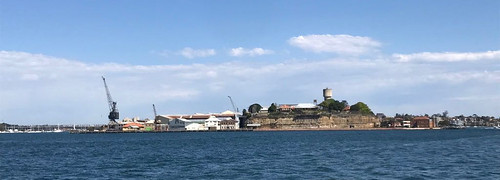
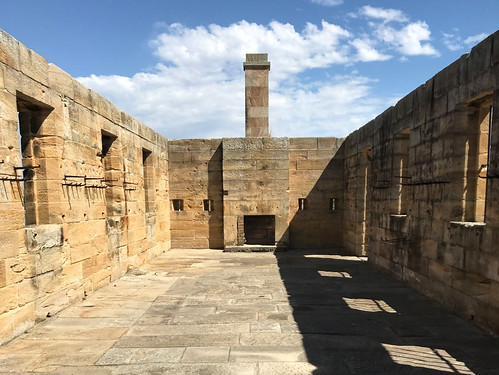
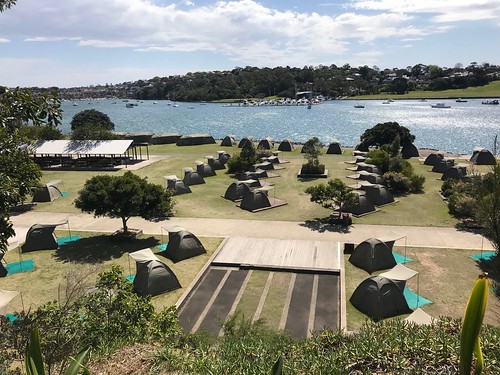
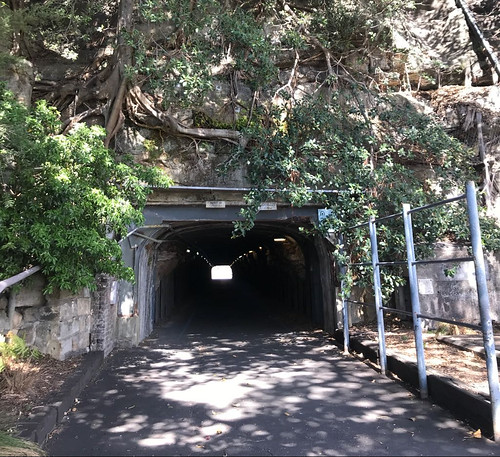
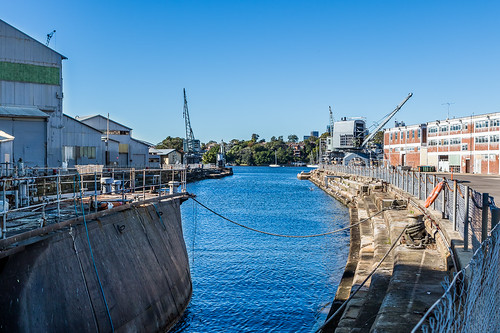
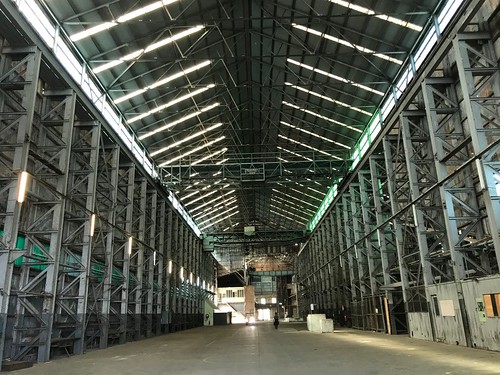
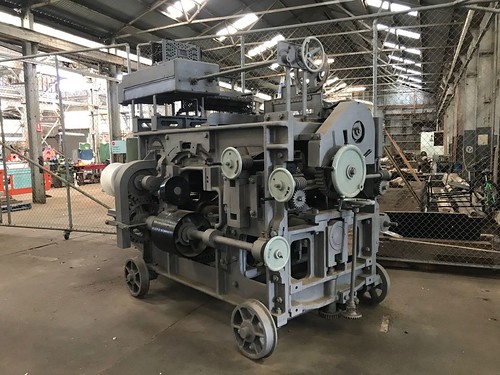
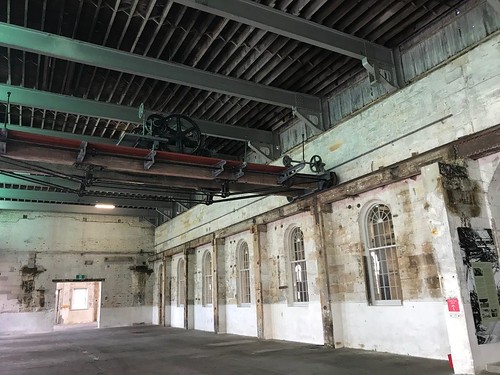
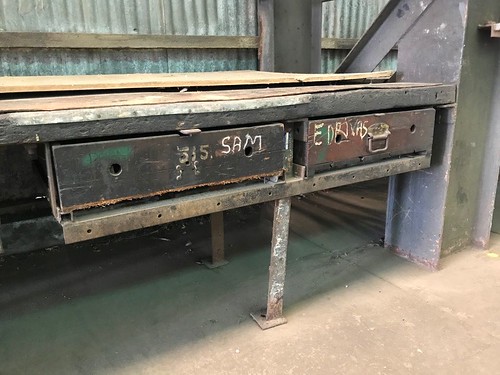
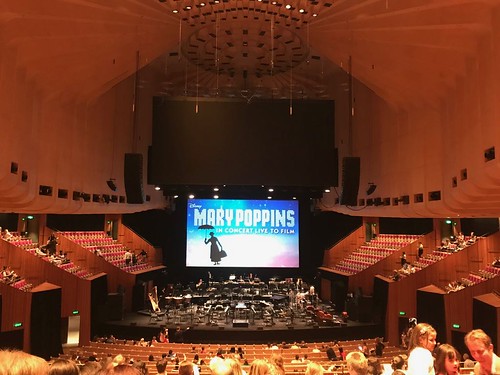

2 Comments:
Hey, now. An opera in the Sydney Opera House seems like the BEST way to experience it. Although...I do love Mary Poppins too...
Our valuation process involves a thorough inspection of your plant and equipment, detailed market research, and expert analysis. Each pp&e valuations report is tailored to the unique requirements of your business, providing reliable and defensible results. We prioritize accuracy, timeliness, and clarity to ensure your assets are represented fairly and comprehensively in all financial and legal documentation.
Post a Comment